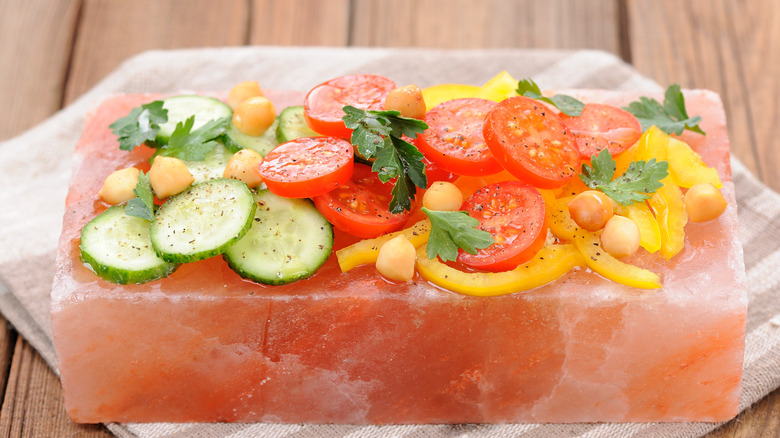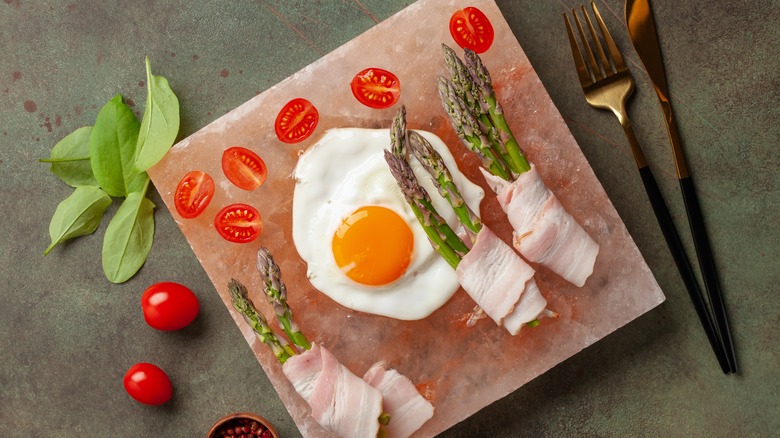The Most Important Tip For Serving Food On A Himalayan Salt Slab
Himalayan salt slabs can be a unique cooking companion both for the flavor they impart and the sheer showmanship they represent. The Manual explains that these carved chunks of pink salt sourced from Himalayan mines can be used in many stages of the culinary process whether its cooking, curing, or serving.
Initial tempering and proper cleaning methods are some of the most asked questions surrounding the blocks, so let's start there. Unlike other kitchen tools, the blocks require special care because they are brittle. According to Salthouse & Peppermongers, tempering the block prevents breakage, and is just a matter of slowly heating it up from 100-300 degrees Celcius in 15-minute increments. The Salt Box says that they also don't require a soapy and sudsy scrub down afterwards — wiping it down with a clean, damp sponge and letting it air dry will suffice as the salty blocks have antimicrobial qualities.
In addition to imparting flavor, Healthline shares that Himalayan salt is an all-natural (and additive-free) sodium source that contains an abundance of trace minerals like iron, which contributes to the salt's unique hue. Additionally, the blocks can also be a useful culinary tool as they are able to evenly distribute heat and are fairly heat resistant. In addition to tempering and cleaning your block, there's another useful tip you should know when it comes to serving food on Himalayan salt slabs.
Wet foods soak the salt, dry foods don't
Though it would seem (and many believe) that the blocks transfer a significant amount of salt to your food, this simply isn't true. Particularly with dry foods, it's still necessary to salt and season what you put on your blocks as only a small amount of salt and minerals will come from it. That said, The Meadow explains that during cooking, high-moisture foods are more susceptible to increased salt absorption — the same can be said of foods that are wet when served on salt slabs. In addition to acquiring more salinity, Salt Works explains that when thinly sliced meat or fish is served on a salt slab, moisture-rich proteins can actually start to cure if left to sit for a period of time. Consequently, both the degree of seasoning and the amount of time that food should spend resting on a salt block will vary depending on the type of food.
Regardless of what you're serving, Just Cook recommends chilling your salt block in the freezer for several hours, letting it rest for about a half an hour before plating any sushi, cheese, fruit, or vegetables. Doing this will making your show-stopping centerpiece more functional and, thus, all the more impressive. Try it out the next time you entertain guests!

